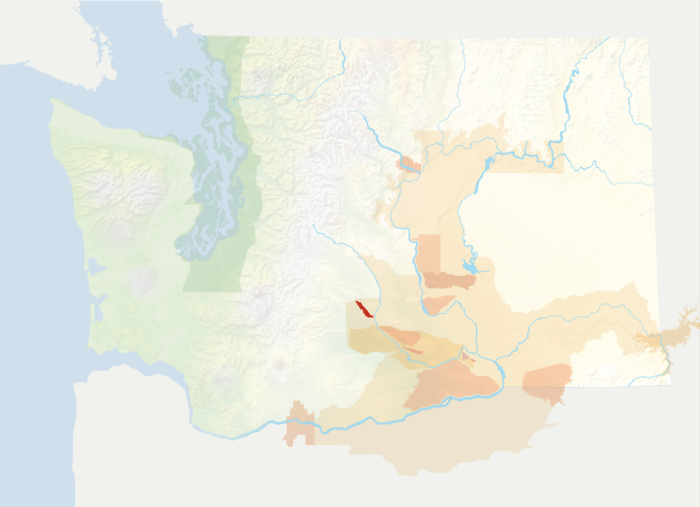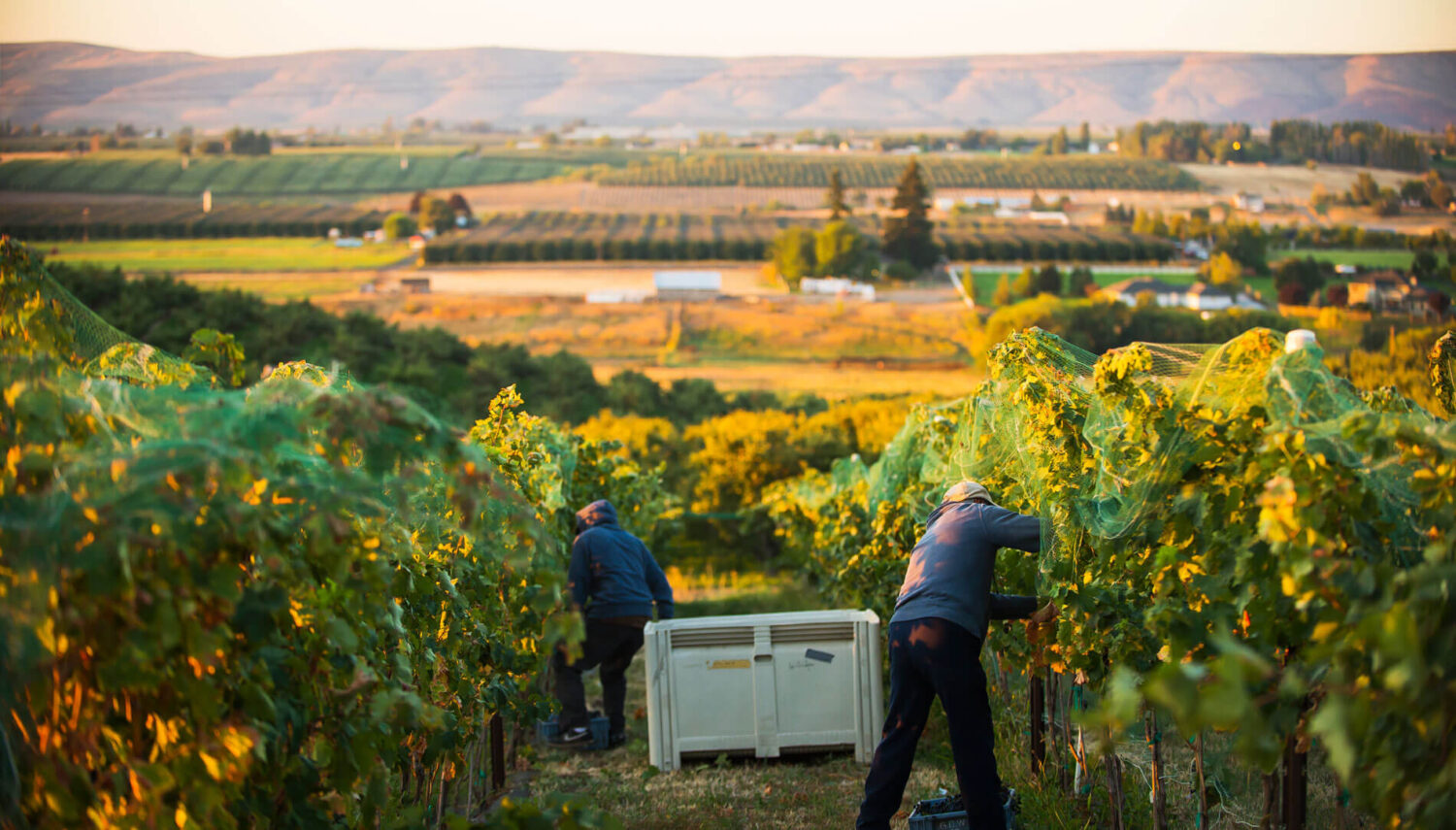Location: South-central Washington
Designated: 2011
Total Size: 13,254 acres
Acreage Under Vine: 50 acres (20 hectares)
Top Varieties: Pinot Gris, Riesling, Gewürztraminer, Syrah
Soils: Windblown loess and clay
Average Annual Precipitation: 10-13 inches
Two Things to Know:
- Naches Heights is located on a 1M year-old lava flow above the Missoula Floods.
- Its elevation and proximity to the Cascades make it cooler and wetter compared to nearby appellations.
Naches Heights is located in south-central Washington. The appellation is situated between the small towns of Naches, from which it gets its name, and Tieton. These towns are northwest of the city of Yakima, in the foothills of the Cascade Mountains. It is wholly contained within the Columbia Valley.
Naches Heights is located on a million-year-old lava flow. Unlike almost all regions of the Columbia Valley, which have basalt bedrock, the appellation has andesite bedrock.

The elevation of the plateau increases gently from southeast to northwest. It is considerably raised from the surrounding area, with elevations ranging from 1,200 to 2,100 feet. This elevation and the appellation’s proximity to the Cascade Mountains make it cooler relative to many other Columbia Valley appellations. This elevation and gentle grade also help colder air drain into lower lying areas, reducing the risk of frost damage.
Due to its higher elevation, Naches Heights is also wholly above the level of the Missoula Floods, a series of repeated, cataclysmic events that define the soils of the majority of Washington’s grape growing regions. Unlike these areas, which have alluvial soils, Naches Heights is all windblown soil, which continues to accumulate. The soil also contains a significant amount of clay, helping to retain water. The appellation’s western proximity, closer to the Cascade Mountains, also lead to higher annual precipitation than the surrounding Columbia Valley.
Naches Heights is a new grape growing region, with its first vinifera plantings in 2002. Intriguingly, all of these vineyards are farmed either organically, biodynamically, or salmon-safe, with some a combination.

